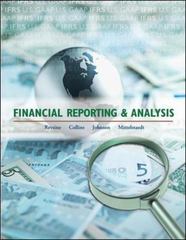Question
1)You are in charge of managing the inventory of a well-established SKU that has very steady demand of 330 items per month, with no visible
1)You are in charge of managing the inventory of a well-established SKU that has very steady demand of 330 items per month, with no visible trend or seasonality.
The cost of the product is 135 $/item and your firm uses an annual holding charge of 0.2 $/$/year (recall this is the same thing as saying 20 percent per year). You have found that there are two components to the ordering costs: labor and transportation. Labor costs are 57 $/order and transportation costs are 124 $/order - regardless of the number of items in the order. You sell each item for 270 $/item.
You must order in multiples of 10 since they come in cases of 10 each - so round to thenearestmultiple of 10. Assume 12 months per year.
1) What should your order size be in terms of items (not cases)?
2)Using the order quantity from Part 1 (rounded to the nearest multiple of 10), what is the number of orders per year?
(in two decimal places)
3) Using the order quantity from Part 1 (rounded to the nearest integer), what are the total relevant costs per year?
4)The Suppy Chain Manager tells you that Procurement has decided that the supplier of your SKU will supply one more SKU to the company. By combining these SKUs on the same order and shipment, the order costs can be shared between the SKUs. However, this means the items need to be ordered at the same times.
If the items are ordered every 28 days, what is the new order quantity for the first SKU (the one you calculated the order quantity for in Part 1)? Assume 365 days per year.
Round to the nearest multiple of 10.
5)Compare the solution in Part 4 to the original order quantity from Part 1.
What is the change in total annual inventory holding cost for the SKU? (For instance, if your order quantity from Part 4 leads to an annual inventory holding cost of $3,800 and your order quantity from Part 1 leads to an annual inventory holding cost of $4,200, the solution is $3,800-$4,200=-$400 and you answer -400.)
Round to the nearest integer. The answer can be negative.
Step by Step Solution
There are 3 Steps involved in it
Step: 1

Get Instant Access to Expert-Tailored Solutions
See step-by-step solutions with expert insights and AI powered tools for academic success
Step: 2

Step: 3

Ace Your Homework with AI
Get the answers you need in no time with our AI-driven, step-by-step assistance
Get Started


